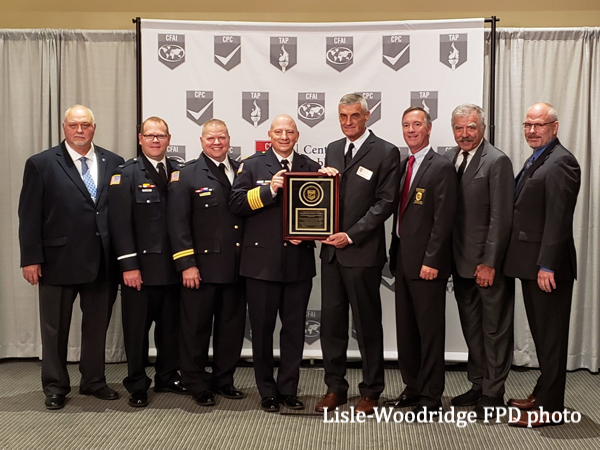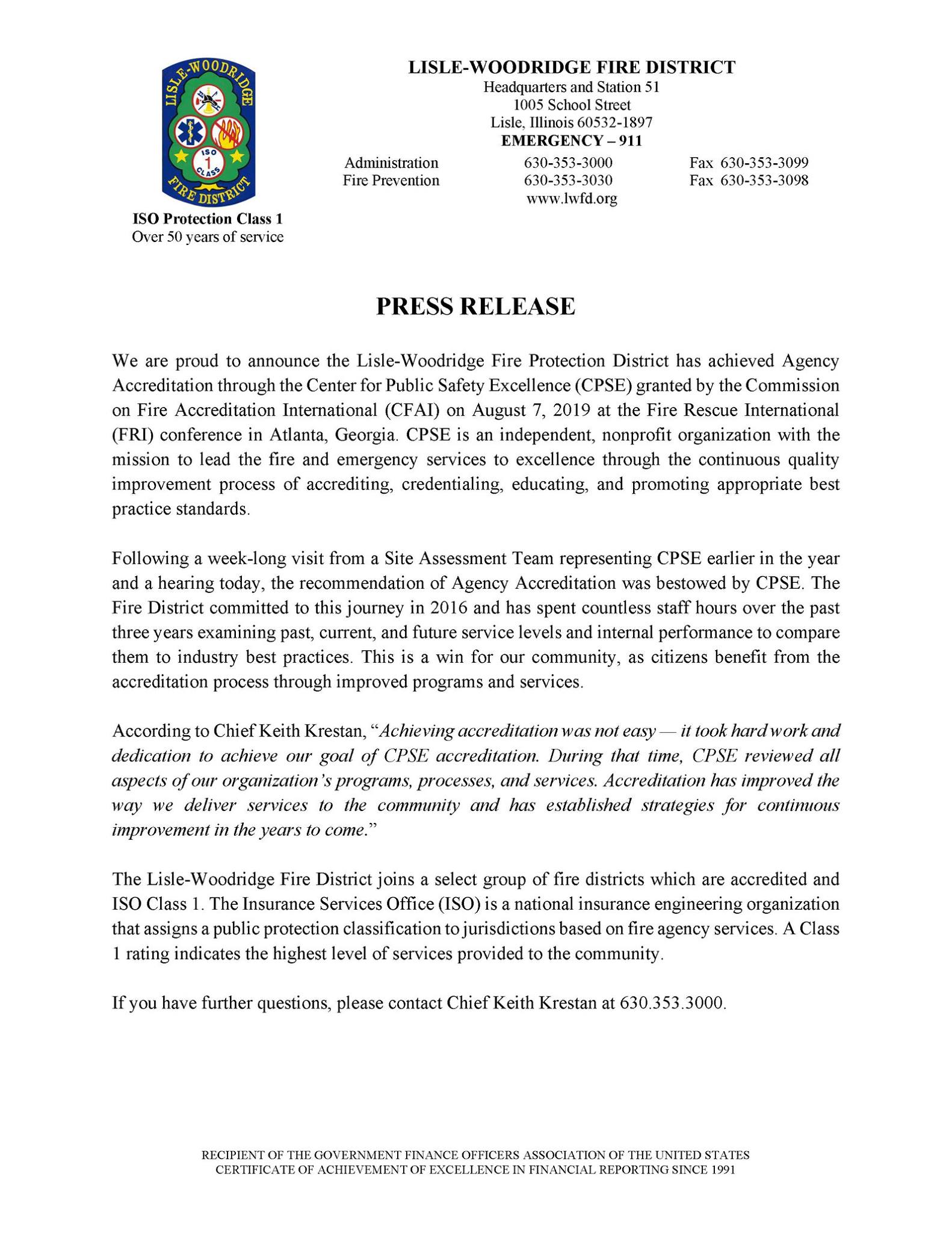From the Lisle-Woodridge FPS Facebook page:
The Center for Public Safety Excellence (CPSE) has granted Agency Accreditation status to the Lisle-Woodridge Fire Protection District. Congratulations and thank you to everyone involved! We will now be ISO Class 1 and internationally accredited

Lisle-Woodridge FPD photo

Lisle-Woodridge FPD photo



















































